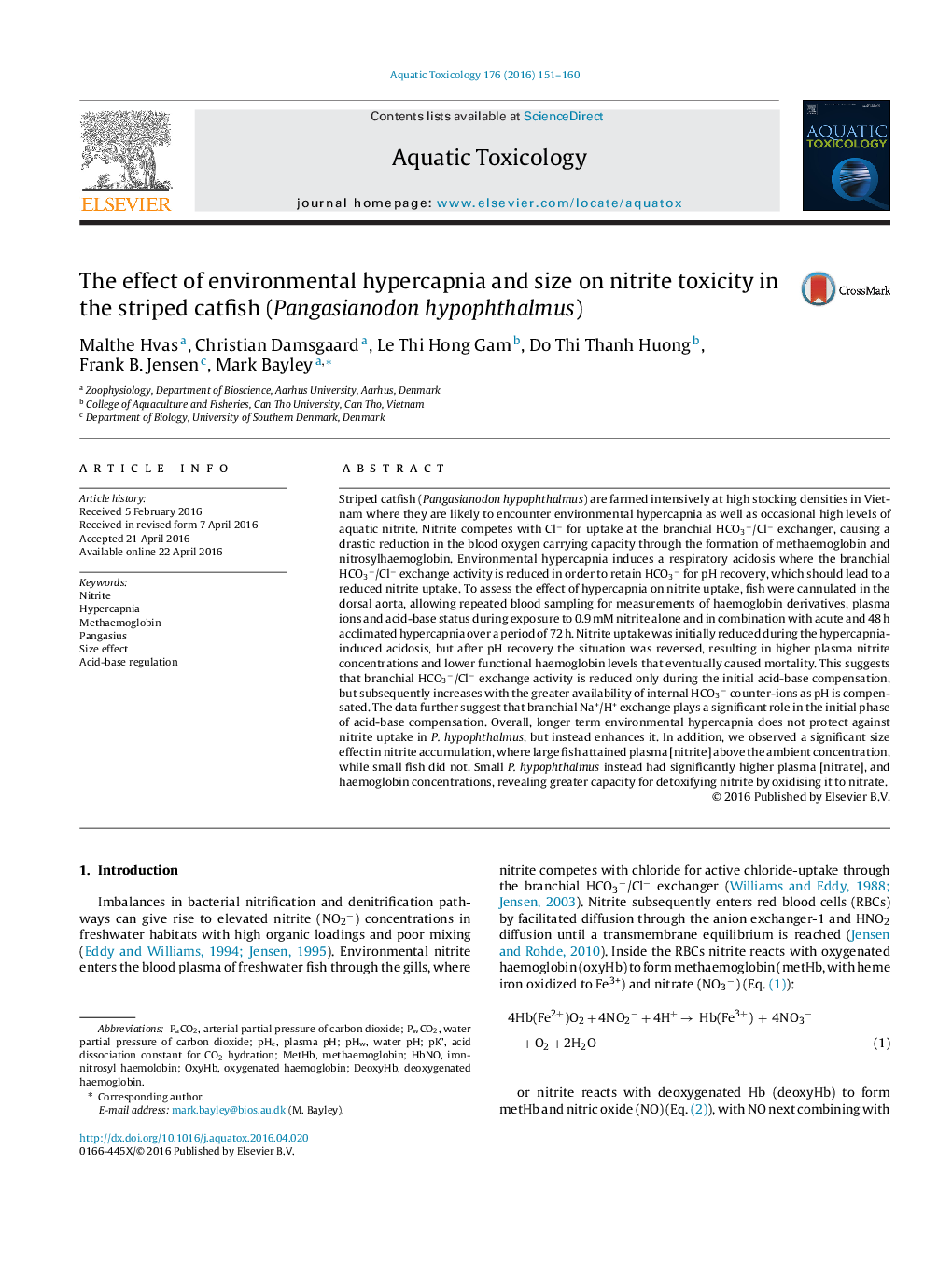| کد مقاله | کد نشریه | سال انتشار | مقاله انگلیسی | نسخه تمام متن |
|---|---|---|---|---|
| 6381952 | 1625929 | 2016 | 10 صفحه PDF | دانلود رایگان |
عنوان انگلیسی مقاله ISI
The effect of environmental hypercapnia and size on nitrite toxicity in the striped catfish (Pangasianodon hypophthalmus)
دانلود مقاله + سفارش ترجمه
دانلود مقاله ISI انگلیسی
رایگان برای ایرانیان
کلمات کلیدی
موضوعات مرتبط
علوم زیستی و بیوفناوری
علوم کشاورزی و بیولوژیک
علوم آبزیان
پیش نمایش صفحه اول مقاله

چکیده انگلیسی
Striped catfish (Pangasianodon hypophthalmus) are farmed intensively at high stocking densities in Vietnam where they are likely to encounter environmental hypercapnia as well as occasional high levels of aquatic nitrite. Nitrite competes with Clâ for uptake at the branchial HCO3â/Clâ exchanger, causing a drastic reduction in the blood oxygen carrying capacity through the formation of methaemoglobin and nitrosylhaemoglobin. Environmental hypercapnia induces a respiratory acidosis where the branchial HCO3â/Clâ exchange activity is reduced in order to retain HCO3â for pH recovery, which should lead to a reduced nitrite uptake. To assess the effect of hypercapnia on nitrite uptake, fish were cannulated in the dorsal aorta, allowing repeated blood sampling for measurements of haemoglobin derivatives, plasma ions and acid-base status during exposure to 0.9Â mM nitrite alone and in combination with acute and 48Â h acclimated hypercapnia over a period of 72Â h. Nitrite uptake was initially reduced during the hypercapnia-induced acidosis, but after pH recovery the situation was reversed, resulting in higher plasma nitrite concentrations and lower functional haemoglobin levels that eventually caused mortality. This suggests that branchial HCO3â/Clâ exchange activity is reduced only during the initial acid-base compensation, but subsequently increases with the greater availability of internal HCO3â counter-ions as pH is compensated. The data further suggest that branchial Na+/H+ exchange plays a significant role in the initial phase of acid-base compensation. Overall, longer term environmental hypercapnia does not protect against nitrite uptake in P. hypophthalmus, but instead enhances it. In addition, we observed a significant size effect in nitrite accumulation, where large fish attained plasma [nitrite] above the ambient concentration, while small fish did not. Small P. hypophthalmus instead had significantly higher plasma [nitrate], and haemoglobin concentrations, revealing greater capacity for detoxifying nitrite by oxidising it to nitrate.
ناشر
Database: Elsevier - ScienceDirect (ساینس دایرکت)
Journal: Aquatic Toxicology - Volume 176, July 2016, Pages 151-160
Journal: Aquatic Toxicology - Volume 176, July 2016, Pages 151-160
نویسندگان
Malthe Hvas, Christian Damsgaard, Le Thi Hong Gam, Do Thi Thanh Huong, Frank B. Jensen, Mark Bayley,